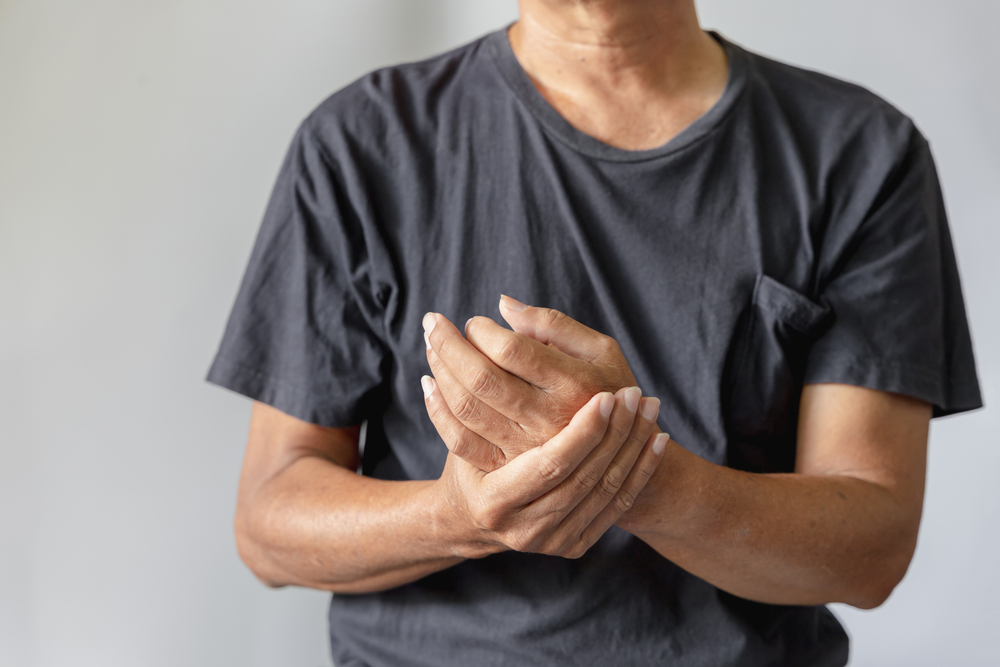Psoriatic arthritis is a chronic autoimmune condition that affects individuals living with psoriasis, causing joint inflammation and discomfort. This article explores the telltale signs of psoriatic arthritis, enabling people to better understand and identify the key indicators leading to early diagnosis and effective management of the condition. To learn more about this condition and how to manage it, continue searching online before consulting a doctor.
What is Psoriatic Arthritis?
Psoriatic arthritis is a type of inflammatory arthritis that typically affects people with psoriasis, a skin disorder characterized by red, scaly patches. However, having psoriasis doesn’t mean you’ll get psoriatic arthritis. Approximately only 30% of people with psoriasis will go on to develop psoriatic arthritis.
While it commonly affects the joints of the fingers and toes, it can also occur in other joints like the knees, ankles, and spine. To gain a deeper understanding of psoriatic arthritis and its various aspects, continue searching and reading online.
Skin Symptoms You Shouldn’t Ignore
Psoriatic arthritis can begin with various skin symptoms, all of which are important to recognize. The most telltale symptoms of psoriatic arthritis are red, scaly patches of skin, known as psoriasis plaques, as well as skin lesions or pustules. These often show up on the joints of limbs, such as knees and elbows. But they can occur in other areas of the body.
However, there are other skin changes that can occur. This is why it’s important to explore reputable online sources to learn more about the different skin symptoms associated with psoriatic arthritis. By expanding your knowledge, you can better understand the condition and its potential impact on the skin.
Joint Symptoms You Shouldn’t Ignore
Psoriatic arthritis can present a range of symptoms that affect different parts of the body. Some of the most common symptoms include joint pain, swelling, and stiffness, similar to other types of arthritis. In fact, without the skin symptoms it can be hard for a person to determine exactly what type of arthritis they have since the joint symptoms are so similar. The best way to determine is to do thorough research online to gain a better understanding.
The symptoms we listed are just a few examples, and there are more symptoms associated with psoriatic arthritis. To learn about the most common symptoms and gather a comprehensive understanding, continue your online search and explore further resources on this topic.
Additional Symptoms
In addition to joint and skin symptoms, psoriatic arthritis can also present with other symptoms that should raise some concern. Of course the most telling symptoms are the ones we listed above which include joint pain and swelling or red, scaly patches of skin. But psoriatic arthritis can cause symptoms beyond just the joints and skin. For example, people may experience fatigue, nail changes, or even eye inflammation.
This is just a brief overview of the additional symptoms of psoriatic arthritis. To gain a more in-depth understanding, such as what exactly the nail changes are or what eye problems may arise, continue exploring online. By seeking reliable sources, you can expand your understanding and gain insights into the diverse range of symptoms that may accompany psoriatic arthritis.
How Can I Treat Psoriatic Arthritis?
Treating psoriatic arthritis involves a variety of options that can help manage symptoms and improve quality of life. For instance, medications such as non steroidal anti-inflammatory drugs (NSAIDs) or disease-modifying anti rheumatic drugs (DMARDs) are commonly used. Physical therapy and regular exercise can also help maintain joint flexibility and reduce pain.
Additionally, there are alternative treatments and lifestyle changes that may be beneficial. To explore all the available treatment options and find the best approach for you, continue your online search and discover more insights and guidance on treating psoriatic arthritis.
Learn More About Psoriatic Arthritis Today!
If you or someone you know is experiencing joint pain or swelling along with psoriasis, start researching online to uncover valuable information about psoriatic arthritis. Educating yourself about psoriatic arthritis can empower you to recognize the early warning signs, seek timely medical assistance, and make informed decisions about managing the disease.
While it’s important to seek assistance from a healthcare professional, it’s also a good idea to take the initiative to explore further before seeing a doctor. Knowledge is the key to understanding and managing psoriatic arthritis effectively. This information can help prepare you on what questions to ask your doctor, how to advocate for yourself, and make your visit more productive. Start your search today and discover the resources that can help you on your journey toward better health.



